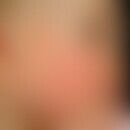DefinitionThis section has been translated automatically.
Dried leaves of the dyer's bush. Henna is obtained from the dried leaves.
Not of pharmacopoeial quality.
HMPC: not processed
ESCOP: not processed
Commission E: not processed
Traditional medicine: in the Orient: internally as a diuretic, for amoebic dysentery, gastrointestinal diseases; externally eczema, scabies, mycoses, ulcers
In the meantime the antioxidant, anti-inflammatory, antibacterial and anticancer effects are known, see also under Henna.
LiteratureThis section has been translated automatically.
- Blaschek W (2015) Wichtl-Teedrogens and phytopharmaceuticals. A handbook for practice. Wissenschaftliche Verlagsgesellschaft Munich. S 325-327
- Badoni Semwal R et al (2014) Lawsonia inermis L. (henna): ethnobotanical, phytochemical and pharmacological aspects. J Ethnopharmacol. 2014 Aug 8;155(1):80-103. doi: 10.1016/j.jep.2014.05.042. Epub 2. PMID: 24886774.
- Pradhan R et al. (2012) From body art to anticancer activities: perspectives on medicinal properties of henna. Curr Drug Targets;13(14):1777-98. doi: 10.2174/138945012804545588. PMID: 23140289.
- Dash A et al. (2025) Advancements in synthetic methodologies and biological applications of lawsone derivatives. Org Biomol Chem 5;23(10):2302-2322. doi: 10.1039/d5ob00020c. PMID: 39912761.



